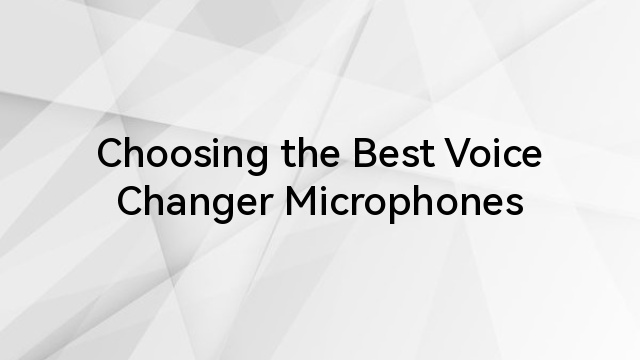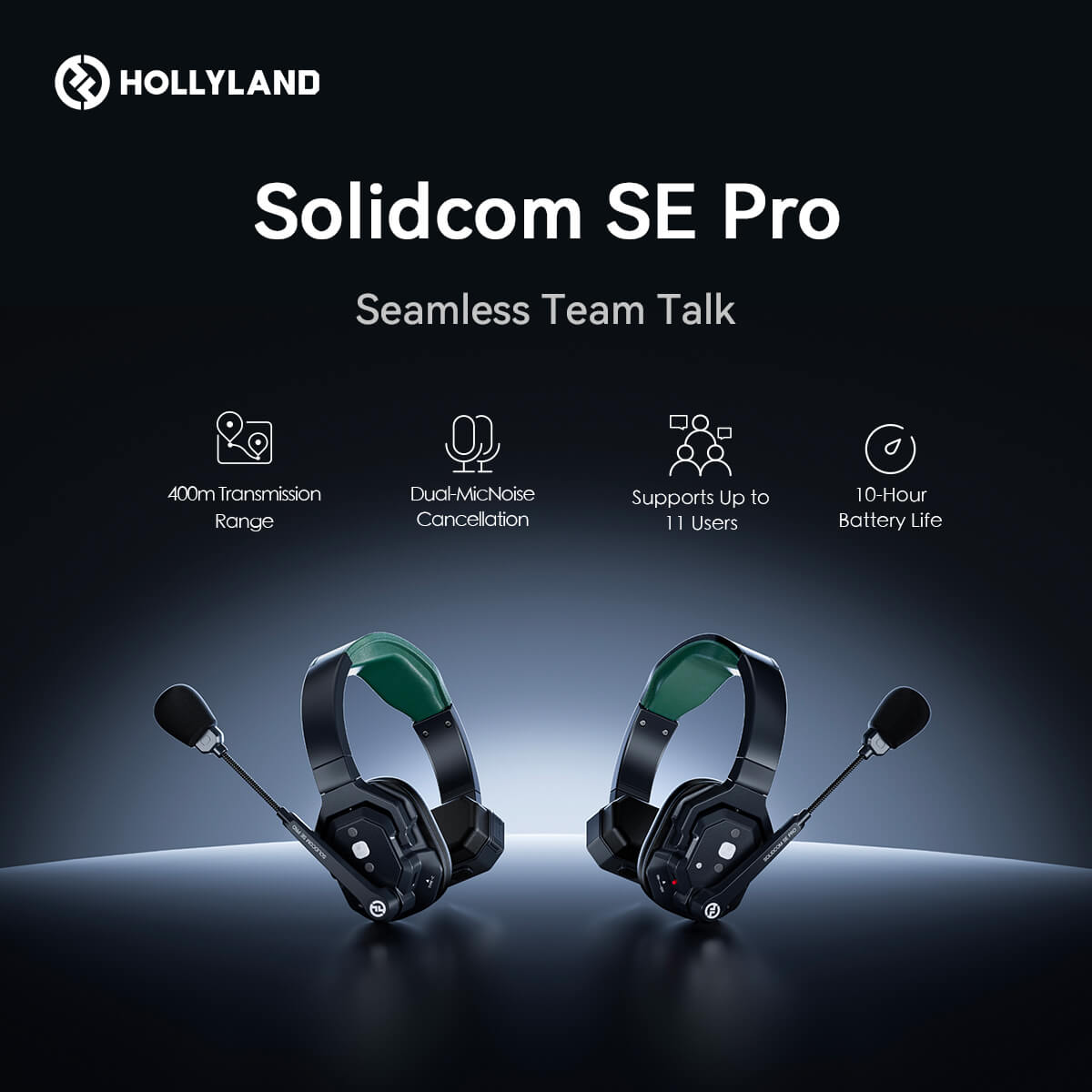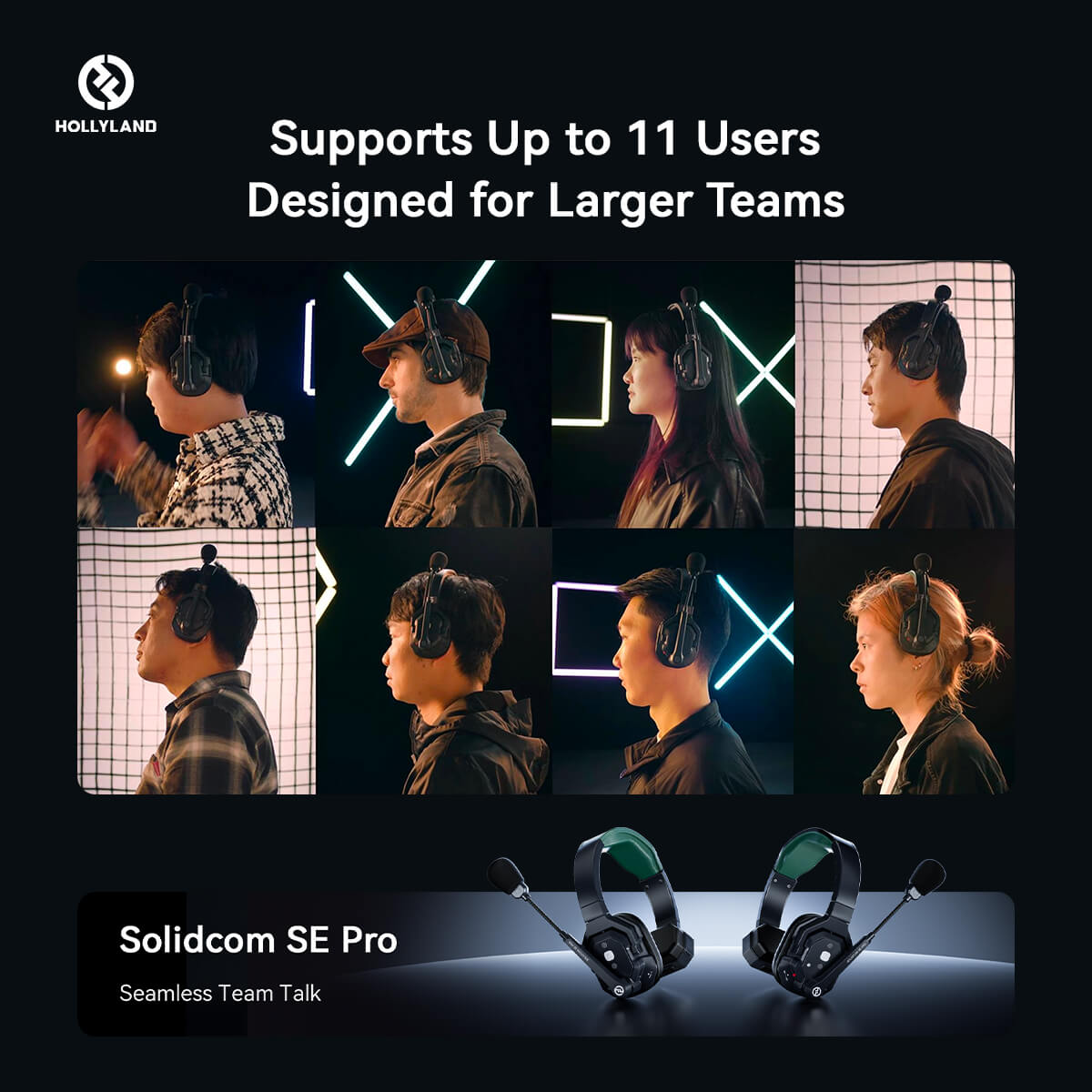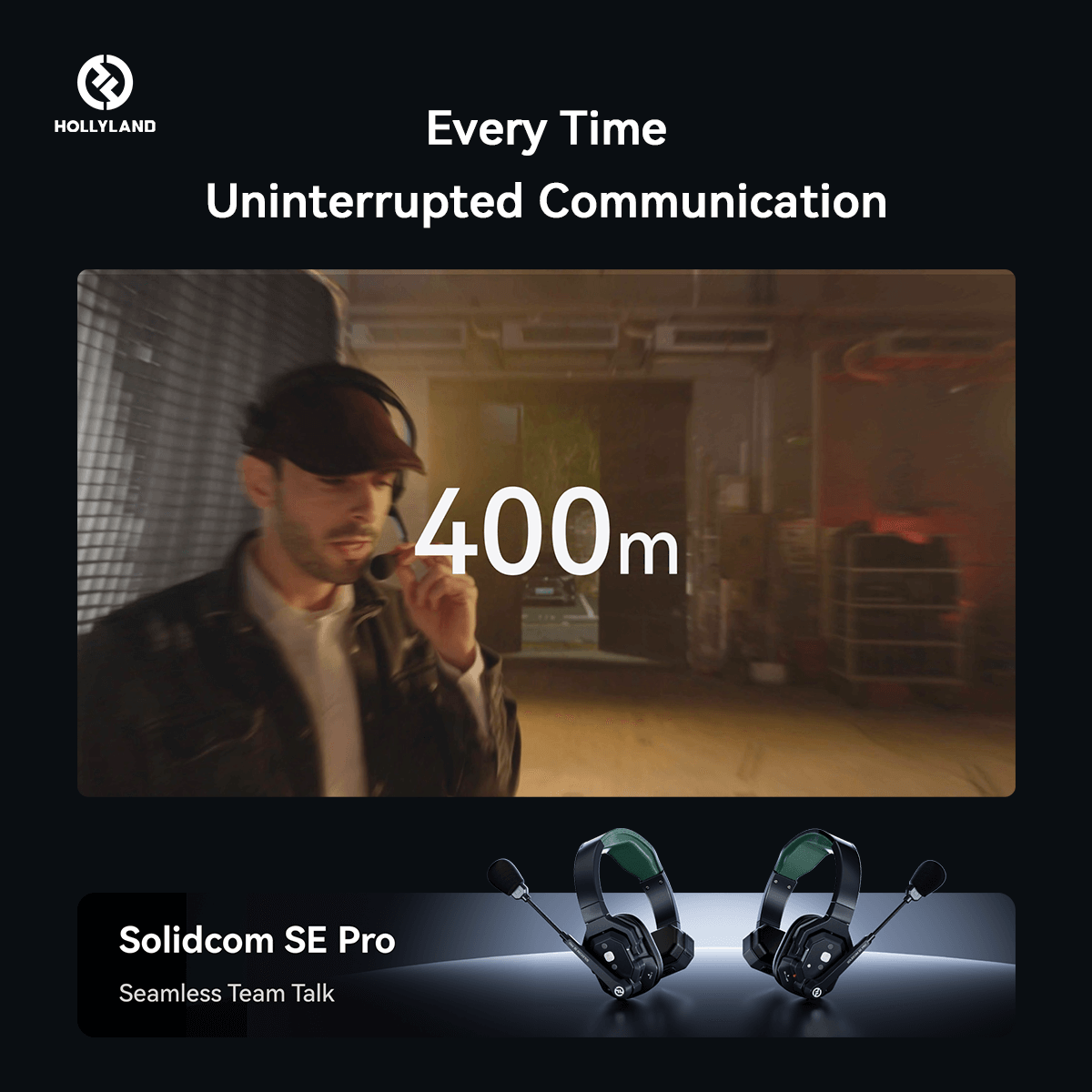Finding the best live microphone for your vocal performance can feel like a quest for that perfect note—it requires clarity, range, and a touch of magic. Whether you're serenading a small crowd or amplifying your voice in an auditorium, the right mic can elevate your performance. But with so many options on the market, how do you choose the one that will make your voice soar? Fear not! We’ve compiled a list of top-notch microphones that have proven to hit all the right notes for stellar live vocals. Let's dive into the world of live microphones to find your ideal match.
Selecting the best live microphone for vocals requires careful consideration of several key criteria. Here’s a straightforward breakdown of the factors to keep in mind:
- Sound Quality: The microphone must deliver clear and natural vocal reproduction, highlighting the unique characteristics of the voice without distortion or unwanted noise.
- Polar Pattern: This determines how well the microphone captures sound from different directions. Cardioid patterns are commonly preferred as they pick up sound primarily from the front, minimizing background noise and feedback from monitors.
- Frequency Response: Look for a mic with a frequency response that complements the human voice, typically ranging from about 80 Hz to 15 kHz for a balanced and articulate sound.
- Durability: Given the rigors of live performance, a robust build that can withstand handling and environmental stresses is essential.
- Handling Noise: The microphone should have low handling noise to avoid disruptive sounds when moved or held.
- Feedback Rejection: A good live vocal microphone should be able to resist feedback even in loud stage environments.
- Compatibility: Ensure the microphone works with your existing sound system and can handle the dynamics of your performance style.
Now, let’s explore some top choices that excel based on these criteria.
Remember that the prices can vary depending on the retailer and current promotions, so they're approximations:
| Microphone | Price (Approx.) | Type | Polar Pattern | Frequency Response | Sensitivity | Impedance | Additional Features |
|---|---|---|---|---|---|---|---|
| Shure SM58 | $100 - $120 | Dynamic | Cardioid | 50Hz to 15kHz | -54.5 dBV/Pa (1.85 mV) | 150 Ohms | Built-in spherical filter, shock-mount system |
| Sennheiser e945 | $180 - $220 | Dynamic | Supercardioid | 40Hz to 18kHz | 2.0 mV/Pa (-54 dBV) | 350 Ohms | Shock-mounted capsule, hum compensating coil |
| Audio-Technica AT2020 | $100 - $120 | Condenser | Cardioid | 20Hz to 20kHz | -37 dB (14.1 mV) re 1V at 1 Pa | 100 Ohms | Low-mass diaphragm, high SPL handling |
| Neumann KMS 105 | $500 - $700 | Condenser | Supercardioid | 20Hz to 20kHz | -47 dBV/Pa | 50 Ohms | Transformerless circuitry, built-in pop filter |
| AKG C414 XLII | $1000 - $1100 | Condenser | Multiple patterns (9 patterns) | 20Hz to 20kHz | 23 mV/Pa (-33 dBV) | 200 Ohms | 3 switchable bass-cut filters, peak hold LED |
When choosing the "best" microphone, it's important to consider the specific needs of the vocalist and the context in which the mic will be used, such as the genre of music, live performance conditions, and personal sound preferences. Each microphone has its own unique characteristics that may suit different voices and styles.
Shure SM58
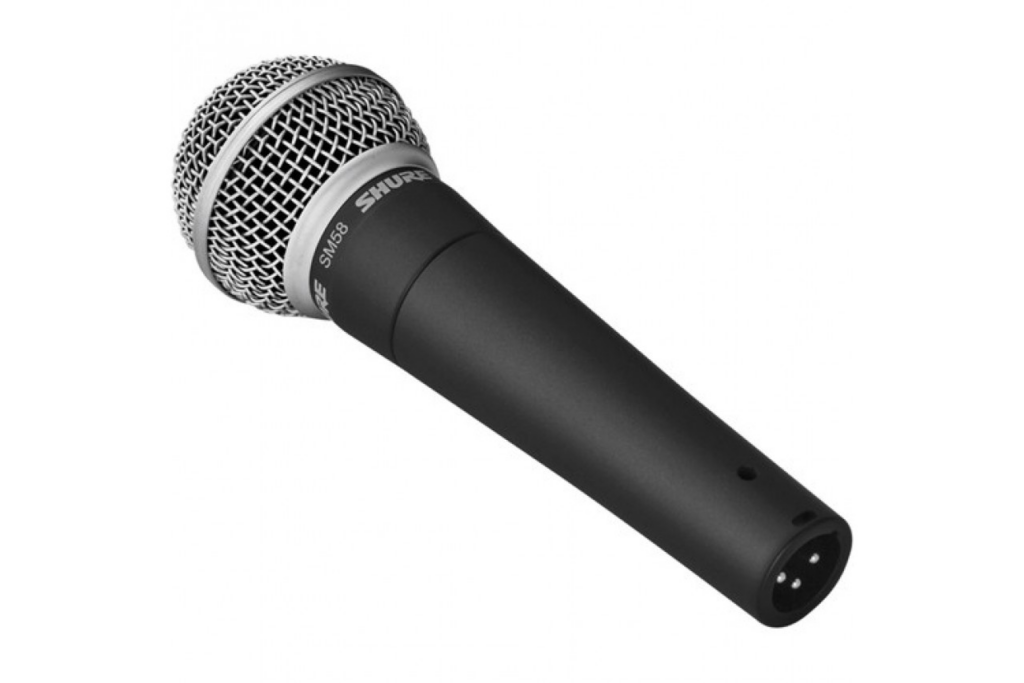
Overview
The Shure SM58 is an iconic microphone and has been the go-to choice for countless vocalists for generations. My experience with the SM58 has proven it to be a remarkably sturdy and reliable microphone, perfect for live performances. Its sound quality is a trustworthy representation of the human voice, consistently capturing both the warmth and clarity that artists strive for. The microphone’s cardioid pickup pattern does a commendable job at isolating main vocals while minimizing background noise—which is a lifesaver in a lively stage environment.
While it may not boast the same high-end clarity as some of its pricier counterparts, the SM58 has a certain sonic character that can be very flattering on a wide range of voices. This microphone thrives in the live setting; whether it's being belted into by a rock singer or cradled by a jazz vocalist, the SM58 delivers a solid performance every time.
Specs
- Polar Pattern: Cardioid
- Frequency Response: 50 to 15,000 Hz
- Output Impedance: 150 ohms
- Sensitivity: -54.5 dBV/Pa (1.85 mV)
- Connectivity: Wired – XLR
- Build: Die-cast metal handle, steel mesh grille, integrated wind and pop filter
Pros:
- Durable design that can handle the rigors of touring and frequent use.
- Consistent and reliable performance that you can count on gig after gig.
- Natural vocal reproduction with a slight emphasis on mid-range, helping vocals to cut through a mix.
- Very forgiving in terms of handling noise and feedback rejection.
Cons:
- Not as detailed in the high frequencies compared to more expensive studio-grade microphones.
- Its popularity means it doesn’t offer a unique sound; it’s the standard rather than the exception.
Price
The price of the Shure SM58 is one of its most attractive features. Typically ranging from $90 to $100, it offers incredible value for a professional-quality microphone. It's a solid investment for beginners and pros alike, largely due to its performance and robust build quality. When considering its longevity and how little it has changed over the decades, buying an SM58 is almost like buying a piece of music history. The value you get for the price is remarkable and hard to beat in the realm of live vocal microphones.
Sennheiser e945
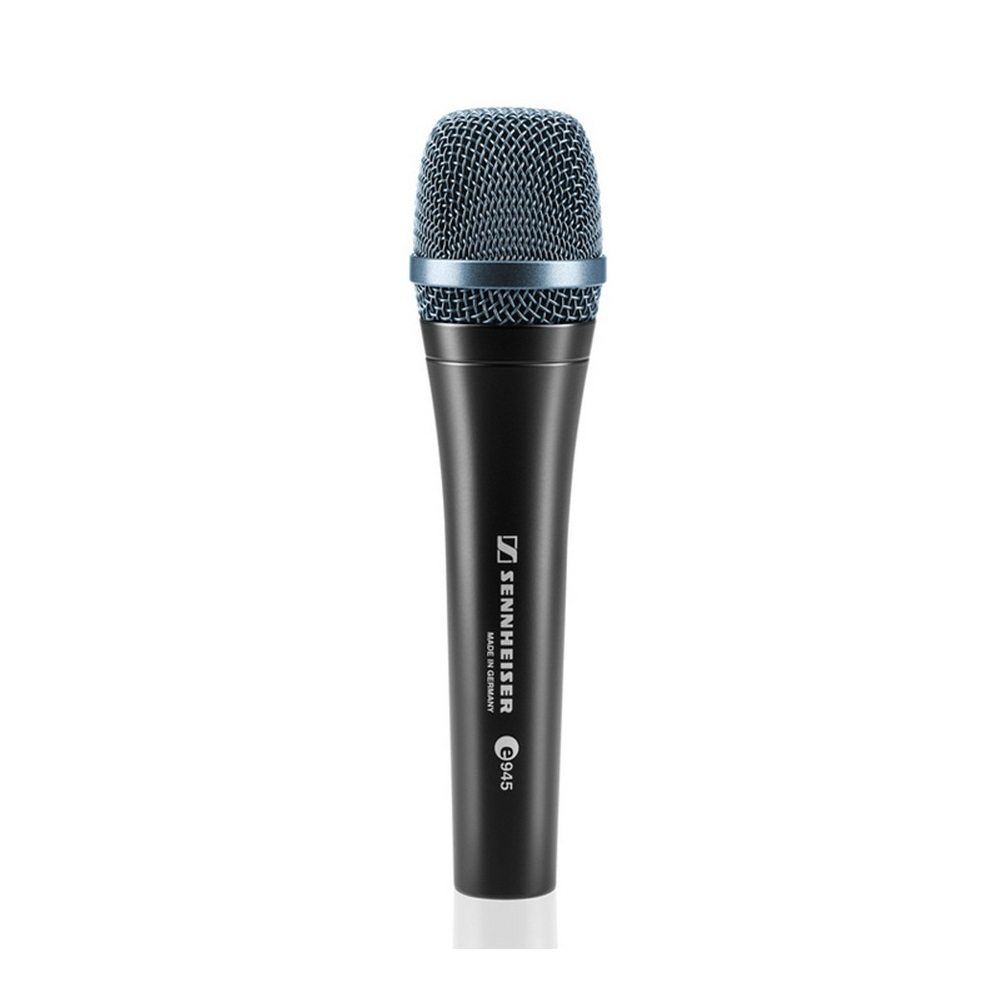
Overview
The Sennheiser e945 is a dynamic vocal microphone that exudes quality and reliability, well-suited for both enthusiastic novices and discerning professionals. My time using this microphone has been nothing short of a revelation in the live performance sphere. Its rugged metal design feels substantial in hand and reassures me that it can withstand the rigors of touring and frequent use.
What stands out the most for me is the e945's exceptional feedback rejection and its ability to capture the essence of the vocal performance even in noisy environments. Thanks to the supercardioid pickup pattern, background noise is significantly minimized, allowing the singer's voice to cut through the mix with clarity and definition. Vocals come out crisp and present, which is exactly what every live performer wants to ensure they connect with their audience.
Moreover, this microphone adds a touch of warmth and smoothness to the vocal tone, which enhances its natural character without making it sound muddy or overly processed. It has an innate ability to give vocals a slight polish that can make a good performance sound great.
Specs
- Polar Pattern: Supercardioid
- Frequency Response: 40Hz - 18kHz
- Connector: XLR-3
- Output Impedance: 350 ohms
Pros:
- The supercardioid pattern offers excellent isolation and feedback resistance.
- Solid build quality that feels like it's built to last a lifetime.
- Warm and smooth vocal reproduction that flatters most voice types.
- High gain before feedback makes it ideal for loud stage environments.
Cons:
- The price point might be a bit steep for those on a tight budget.
- Due to its sound characteristics, it may not be the perfect match for performers seeking an ultra-bright sound profile.
Price
As for the price, the Sennheiser e945 falls into the mid-range category but its performance and build quality arguably justify the investment, especially if you are serious about your sound. It typically retails around the $200 mark, varying slightly depending on where you shop. While there are cheaper options, this microphone is a case of 'you get what you pay for', and with the e945, you're paying for a robust, high-performance tool that can elevate your live vocals significantly.
Audio-Technica AT2020

Overview:
The Audio-Technica AT2020 is not typically categorized as a traditional "live" vocal microphone compared to its more robust dynamic counterparts like the Shure SM58; instead, it is a cardioid condenser microphone much more common in studio settings. However, it can offer a pristine and detailed sound that's particularly appreciated in an intimate live performance or for use in a home studio setup where studio-like vocal clarity is desired on-stage.
My experience with the AT2020 has been quite rewarding. Its exceptional clarity and sound detail bring a polished studio sound to a live environment. The vocal reproduction is crisp and articulate, making it a fine choice for detailed vocal work where every nuance is important. However, its sensitivity means it requires a controlled on-stage sound environment to perform at its best, which might not be suitable for all live situations.
Specs:
- Element: Fixed-charge back plate, permanently polarized condenser
- Polar Pattern: Cardioid
- Frequency Response: 20-20,000 Hz
- Open Circuit Sensitivity: –37 dB (14.1 mV) re 1V at 1 Pa
- Impedance: 100 ohms
- Maximum Input Sound Level: 144 dB SPL, 1 kHz at 1% T.H.D.
Pros:
- Delivers a detailed and transparent sound profile that's rare to find in live scenarios.
- Offers a solid build that can withstand the rigors of transport and moderate use.
- The price-to-performance ratio is phenomenal for a condenser mic of this quality.
Cons:
- Requires careful handling, as it's a condenser mic and not as durable as dynamic live vocal mics.
- Its sensitivity to ambient noise can be problematic in nosier live settings.
- Needs a reliable phantom power source, which can be an added hassle in live situations.
Price:
At the time of this review, the Audio-Technica AT2020 typically sits at a price point around $99, though this can fluctuate slightly based on the retailer and current market conditions. It's relatively affordable for the performance it delivers, especially when compared to some higher-end studio microphones.
In summary, the Audio-Technica AT2020 is a hidden gem for the right performer. When you want to bring that crystal-clear studio vocal quality to a quieter live setting, this microphone should be at the top of your list. However, if you're grappling with a high-energy rock concert or performing outdoors, you might want to reach for something a bit more rugged and less sensitive to sound bleed.
Sure, here's an in-depth review of the Neumann KMS 105, which is the fourth product on your list:
Neumann KMS 105

Overview:
The Neumann KMS 105 is not just a microphone; it's an investment in impeccable sound quality that has the potential to elevate live vocal performances to a whole new level. Unlike the standard dynamic microphones that flood the market, the KMS 105 distinguishes itself as a condenser microphone that captures the subtle nuances of the voice with outstanding clarity. Neumann's reputation for microphones is almost legendary, and this particular model doesn't fall short of their high standards.
In my hands-on experience, the KMS 105 delivered a pristine and clear vocal presentation, and it performed exceptionally well in live situations where detail is paramount. This microphone's ability to isolate the main source of sound while rejecting off-axis noise is remarkable, contributing to its high intelligibility and precision, which is essential for both performers and audiences seeking a professional audio experience.
Specs:
While I generally focus on how a microphone performs rather than just numbers, the specs are worth mentioning for the KMS 105. It boasts a supercardioid pickup pattern, which is excellent for stage use, giving it a tight focus on the sound source. The frequency response is tailored to vocals with a gentle presence boost ensuring the voice cuts through the mix. The microphone also offers low self-noise and a high SPL tolerance, meaning it can handle powerful vocals without distortion.
Pros:
- Exceptional vocal clarity and presence.
- Robust construction that can withstand the rigors of touring.
- Superior feedback rejection; a big plus for live performances.
- It makes any voice sound professional due to its detailed and accurate reproduction.
Cons:
- Price might be prohibitive for amateurs or those on a tight budget.
- Requires phantom power, which, though standard in most settings, can be a limitation in some cases.
- It's more sensitive to handling noise than dynamic microphones, so proper mic technique is essential.
Price:
Regarding the price, the KMS 105 is on the higher end, reflecting its premium quality. It tends to range from $600 to $700, which is a serious investment for a serious performer or sound engineer. The cost is quite justified when you consider the superior sound and build quality, which translate to a better experience for the audience and a lasting addition to a vocalist's gear.
In my opinion, if you're serious about your vocal performance, and your budget allows, the KMS 105 is a worthy microphone that can transform your live sound. You definitely get what you pay for, and with Neumann, that's an unspoken guarantee of excellence.
AKG C414 XLII
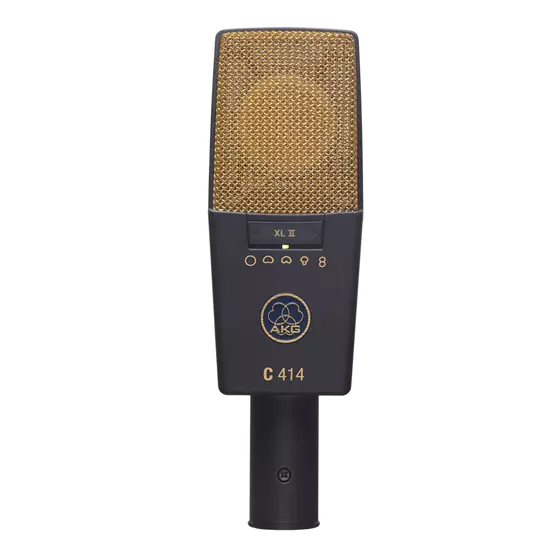
Overview:
The AKG C414 XLII is a true studio legend turned stage veteran. Its versatility is unmatched, thanks to multiple pickup patterns and its reputation for handling a variety of vocal styles and register with ease. In my time using the C414 XLII, I've noticed its particular flair in capturing the nuances and timbres in a vocal performance, lending warmth and presence that is often sought after in both live and studio settings. It might not be the first mic you'd see on stage due to its condenser nature, but for live situations where audio fidelity is paramount, it is an excellent choice.
Specs:
- Polar Patterns: Nine selectable patterns
- Frequency Response: 20 Hz to 20 kHz
- Sensitivity: 23 mV/Pa (-33 dBV)
- Max SPL: 158 dB
- Dynamic Range: 134 dB
Pros:
- The selectable polar patterns make it extremely versatile and adaptable to different recording environments and purposes. You can use it as a hyper-cardioid for live vocals to avoid feedback or omnidirectional for a more natural room feel.
- Its high sensitivity allows it to capture the subtle details of a performance, ensuring that every emotional nuance is translated to the audience.
- Exceptional build quality means it can withstand the rigors of the road, even though it requires careful handling due to its condenser nature.
Cons:
- The price might be a barrier for some. It's an investment, and while it's a workhorse, it's not the go-to for those on a tight budget.
- It requires phantom power, which isn’t a problem in most modern venues, but something to be mindful of nonetheless.
- Being a studio-grade condenser microphone, it might pick up more stage noise compared to dynamic microphones, so careful placement and sound checks are crucial.
Price:
The AKG C414 XLII typically falls within the high-end price spectrum. You'd be looking at spending well over $1,000 for this microphone. While it's certainly on the steep side, considering the versatility and the professional audio quality it brings to the table, the C414 XLII is seen by many as a worthwhile investment, especially if you're aiming for top-tier vocal reproduction on stage or in studio.
Conclusion:
In the quest for the perfect live vocal microphone, we discovered that great sound quality, durability, and stage compatibility are crucial. Whether you're an energetic rock star or a soulful soloist, there's a mic that fits your voice and style. Remember, the best mic for your vocals is one that captures the unique characteristics of your voice and seamlessly conveys its emotion to the audience. Test, listen, and let your ears decide!
While handheld vocal mics provide excellent audio quality on stage, sometimes performers need greater freedom and mobility without sacrificing sound clarity. A high-quality wireless lavalier microphone can offer singers exceptional flexibility during live performances, making it a valuable addition to your vocal gear in 2024.
Best Seller
Sale
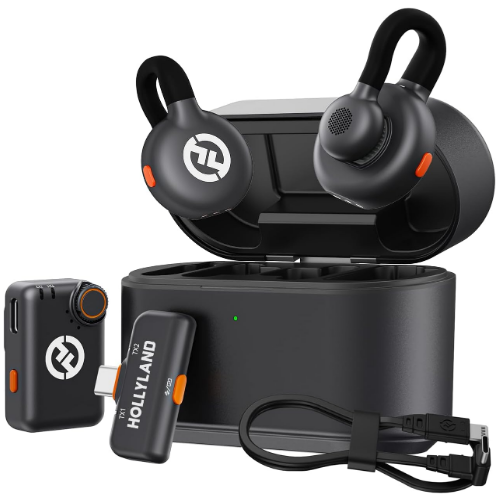
Hollyland LARK M2S - Wireless Clip-on Microphone
- 7g Lightweight, Titanium Clip, Discreet Design
- Clear sound with 24-bit/48kHz, 70dB SNR, 116dB SPL
- Noise Cancellation & 300m Long-Range Stability
- Works with Camera/iPhone/Android/Laptop
- Perfect for Content Creators, Online-Teaching, Streaming
$139
$159
FAQs:
- What makes a microphone good for live vocals?
A good live vocal microphone typically offers clear sound reproduction, feedback rejection, and is built to withstand the rigors of stage use. - Do I need a different microphone for studio recording and live performances?
Yes, often. Studio mics are designed for the controlled environment of a recording space and may not be as sturdy or feedback-resistant as live mics. - How much should I spend on a live vocal microphone?
The price can vary widely based on brand quality and features. While you don't need to break the bank, investing in a mid-range microphone can significantly improve your live vocal performance.



























.png)


